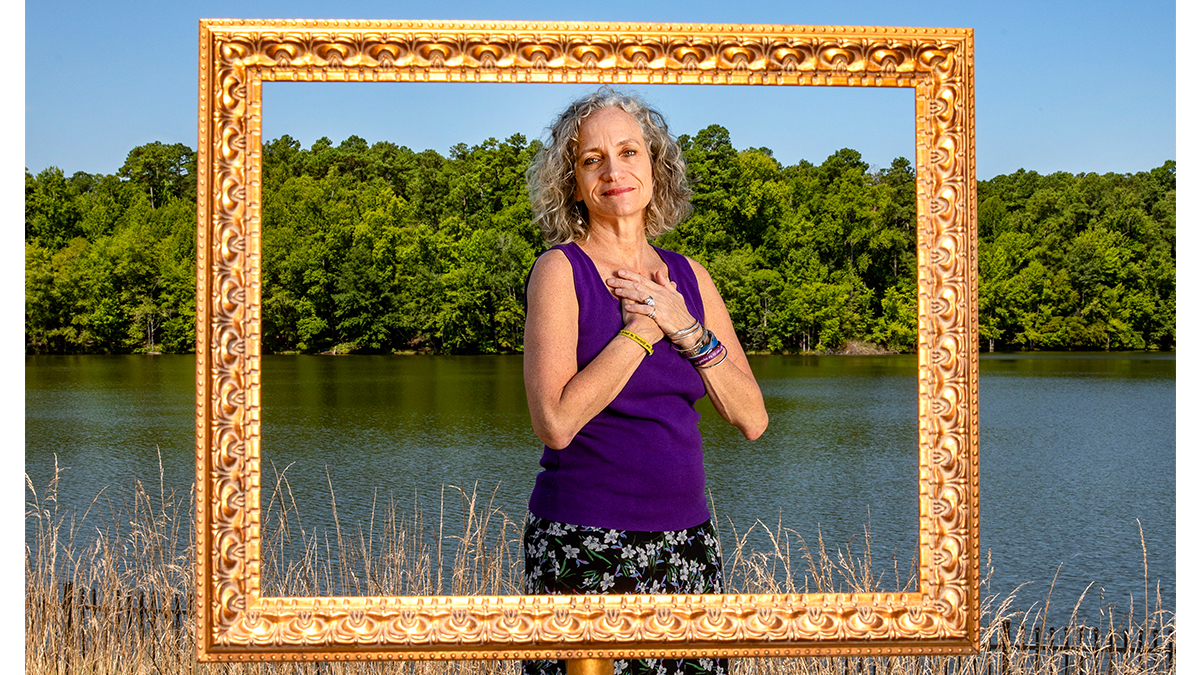Putting self-compassion into practice
UNC-Chapel Hill researcher Karen Bluth studies self-compassion and the role it plays in supporting mental health, particularly in teens. Here she offers a few tools for practicing self-compassion.

We’re taught in our kindergarten classrooms to be kind to others. But what about being kind to ourselves?
Self-compassion — a close cousin of mindfulness — is a simple and powerful tool for managing stress and anxiety. Simply put, it’s the process of caring for ourselves the way we would care for a good friend during a difficult time.
Karen Bluth, an assistant professor of psychiatry at the University of North Carolina at Chapel Hill, says self-compassion can boost resilience, lessen symptoms of anxiety and even prevent depression in people who show initial signs.
So how do we put self-compassion into practice? Bluth, who provides mindfulness training for teens and adults at Carolina’s Frank Porter Graham Child Development Institute, offers a few tips.
Give yourself permission to be kind to yourself.
According to Bluth, self-kindness hasn’t always been popular in American culture, and high-achievers, in particular, can struggle with self-compassion as a concept.
“From the media, we get the message that you can’t accept yourself the way you are,” she said. “You’re supposed to look younger. You’re supposed to be thinner. You’re supposed to be more successful, make more money, whatever it is. And it’s exhausting.”
But Bluth’s research shows that self-kindness isn’t selfish or indulgent but necessary for long-term happiness and success. With that in mind, we permit ourselves to practice self-compassion. Bluth said it can be helpful to pose the question: “May I be kinder to myself?”
Realize that you’re not alone.
When you’re stuck in traffic, having a difficult conversation with a friend or just feeling overwhelmed, Bluth recommends taking a self-compassion break.
“Just pause and say, ‘This is a moment of struggle. Struggles are a part of life. This is normal. I’m not alone,’” she said. “It’s about common humanity — understanding that what we’re experiencing, especially when we’re feeling uncomfortable or sad or hurt, is just part of the human experience.”
Bring your attention to the soles of your feet.
One exercise Bluth recommends in a moment of struggle is to focus on the soles of your feet.
“It’s about bringing our attention to the present moment instead of ruminating on the past or the future,” she said. “Your feet are the farthest point from your head, so it helps us get out of our heads. When we notice how the soles of our feet feel on the floor, it’s very grounding.”
Consider what you might say to a close friend.
Almost 80% of us are kinder to our friends than we are to ourselves. At its core, self-compassion is about extending the same kindness to ourselves that we extend to those around us.
“[In self-compassion training] we ask people to think of a time when a friend was really struggling, and to compare what they said to their friend, the tone of voice they used, to the way they talk to themselves,” Bluth said. “That is kind of an ‘aha’ moment for people.”
Put your hand over your heart.
This one can feel awkward at first, Bluth said, but it gets easier with practice. It’s called supportive touch: putting one hand over your heart, placing a hand on your cheek or crossing your arms in a self-hug to encourage your body to produce oxytocin, a feel-good hormone.
“We do it for other people all the time. We give them a hug or put a hand on their back,” she said. “We can do that for ourselves.”




